Geography: The Federated States of Micronesia (FSM) are a group of 607 islands (FSM Government, 2014a) in the North Pacific Ocean about three-quarters of the way from Hawaiʻi to Indonesia. The islands have a total land area of 271 square miles (Central Intelligence Agency, 2014d). Unique attributes of each of the FSM’s four states will be discussed separately below.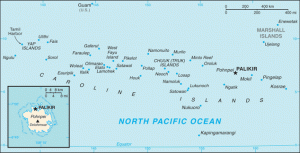
FSM History European ships visited the islands beginning the 17th century. In 1686 Spanish navigator Francisco Lazcano named the chain (together with Palau) “the Caroline Islands” after Carlos II of Spain (Room, 1988). In the 18th century the islands were visited by whaling ships. Spain formalized their claim to the islands in 1886 and held them as a colonial possession until the end of the Spanish-American War, when they were sold to Germany (Hezel, 2003). At the outbreak of World War I Japan moved to seize Germany’s colonial possessions in Micronesia, seeking to incorporate the islands into its empire. Under a mandate from the League of Nations, Japan administered the Caroline Islands until the end of World War II, when control passed to the United Nations (U.N.). In 1947, the U.N. created a strategic-area trusteeship encompassing more than 2,000 islands situated between 1° and 22° N latitude and 130° and 172° E longitude (an area of about 3 million square miles). Administered by the U.S., the Trust Territory of the Pacific Islands (TTPI) comprised the Marshall Islands, Palau, Yap, Chuuk, Pohnpei, Kosrae, and the Marianas Islands (excluding Guam) (Encyclopaedia Britannica, 2014k). Beginning in 1969 representatives from what would become the FSM entered into self-government negotiations, culminating in their unification under the constitution drafted in 1975 and put into effect in 1979. In 1991 the UN recognized the FSM as an independent nation, although they continue to rely heavily on foreign financial aid which they receive as part of the Compact of Free Association (COFA) signed with the United States in 1986 and renewed in 2004 (Central Intelligence Agency, 2014d). The FSM has no official language. There are 8 distinct local languages and many dialects; English is widely spoken, especially for trade and government functions (Encyclopaedia Britannica, 2014g).
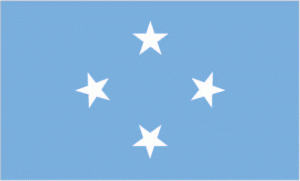 State of Yap: The volcanic islands of Gagil-Tamil, Maap, Rumung, and Yap, are located within a coral reef and collectively comprise the Yap islands (Encyclopaedia Britannica, 2014l). Located 280 miles east of Palau and 500 miles southwest of Guam, The Yap islands, together with one other volcanically raised island and eight major atolls, comprise the state of Yap. The state covers 78,000 square miles of ocean in the Western Pacific and has a total land area of 46 square miles (Yap State Government, 2011). The earliest inhabitants of Yap most likely came from Eastern Indonesia or the Philippines around 1500 B.CE or earlier (Yap Visitors Bureau, 2014). Yap is famous for its stone money, which was quarried in Palau and brought to the state in oceangoing canoes. The stones are large and round with a hole in the middle, made to be placed on poles. There are about 12,000 pieces remaining in Yap, and it is illegal to remove them (Ridgell, 1995). In 1525 Dioga Da Rocha from Portugal was the first European to visit Yap; various other European navigators would pass through the islands of Yap over the next 2 centuries. In 1731 the first Catholic missionaries came to Yap from Guam (Yap Visitors Bureau, 2014). Over the next century or so Yap was nominally controlled by Spain. From 1800-1860 the Yapese traded sea cucumbers with British traders and other Europeans. In 1869 the Germans established their first permanent trading station in Yap (Yap Visitors Bureau, 2014). In the late 19th century an Irish-American named David O’Keefe made a small fortune by quarrying stone money in Palau and bringing it to Yap in a Chinese sailboat (Ridgell, 1995). The people of the Yap islands have a culture and language (Yapese) which are more closely related to the Melanesian language and culture than other Micronesian peoples (Encyclopaedia Britannica, 2014l). People on the outer islands of Yap state speak Nuclear Micronesian languages similar to outer-island Chuuk and Saipan Carolinian (Ridgell, 1995). Approximately one-tenth of the FSM population (about 11,200) people lives in Yap State (FSM Government, 2014b); ethnically Yapese comprise 5.7% and Yap outer islanders 5.1% of the total FSM population (Central Intelligence Agency, 2014d).
State of Yap: The volcanic islands of Gagil-Tamil, Maap, Rumung, and Yap, are located within a coral reef and collectively comprise the Yap islands (Encyclopaedia Britannica, 2014l). Located 280 miles east of Palau and 500 miles southwest of Guam, The Yap islands, together with one other volcanically raised island and eight major atolls, comprise the state of Yap. The state covers 78,000 square miles of ocean in the Western Pacific and has a total land area of 46 square miles (Yap State Government, 2011). The earliest inhabitants of Yap most likely came from Eastern Indonesia or the Philippines around 1500 B.CE or earlier (Yap Visitors Bureau, 2014). Yap is famous for its stone money, which was quarried in Palau and brought to the state in oceangoing canoes. The stones are large and round with a hole in the middle, made to be placed on poles. There are about 12,000 pieces remaining in Yap, and it is illegal to remove them (Ridgell, 1995). In 1525 Dioga Da Rocha from Portugal was the first European to visit Yap; various other European navigators would pass through the islands of Yap over the next 2 centuries. In 1731 the first Catholic missionaries came to Yap from Guam (Yap Visitors Bureau, 2014). Over the next century or so Yap was nominally controlled by Spain. From 1800-1860 the Yapese traded sea cucumbers with British traders and other Europeans. In 1869 the Germans established their first permanent trading station in Yap (Yap Visitors Bureau, 2014). In the late 19th century an Irish-American named David O’Keefe made a small fortune by quarrying stone money in Palau and bringing it to Yap in a Chinese sailboat (Ridgell, 1995). The people of the Yap islands have a culture and language (Yapese) which are more closely related to the Melanesian language and culture than other Micronesian peoples (Encyclopaedia Britannica, 2014l). People on the outer islands of Yap state speak Nuclear Micronesian languages similar to outer-island Chuuk and Saipan Carolinian (Ridgell, 1995). Approximately one-tenth of the FSM population (about 11,200) people lives in Yap State (FSM Government, 2014b); ethnically Yapese comprise 5.7% and Yap outer islanders 5.1% of the total FSM population (Central Intelligence Agency, 2014d).
State of Chuuk: Similar to the state of Yap, the state of Chuuk comprises the Chuuk Islands and several outlying atolls. The Chuuk Islands are a group of 16 highly-eroded volcanic islands in a lagoon surrounded by a barrier reef (Encyclopaedia Britannica, 2014b); Chuuk State also includes 24 inhabited outer-island atolls. The total land area of the state is 49 square miles (Ridgell, 1995). The earliest inhabitants of Chuuk, Pohnpei, and Kosrae most likely came from the Marshall Islands in the east, having originated in Vanuatu and Fiji. Archaeological evidence of settlements dating back to the 1st century C.E. has been found on Chuuk (Encyclopaedia Britannica, 2014g). Historically Chuuk had a fierce reputation characterized by fighting among the islands of the lagoon. For this reason whites tended to avoid these islands, and when missionaries did come to Chuuk State they established missions on the outer islands first (Ridgell, 1995). During Japanese rule rice and sugarcane were planted extensively on the lagoon islands, and in preparation for World War II the Chuuk islands were heavily fortified by the Japanese. Over 60 ships were sunk in the lagoon during the war; today it draws scuba divers from around the world. (Ridgell, 1995). Approximately one half of the FSM population (about 53,500 people) lives in Chuuk State; it is the most populous state in the FSM (FSM Government, 2014b). Weno, the capital, is developed and has paved roads, electricity, and other modern amenities; many people from the outer islands go there for work (Ridgell, 1995). In addition to the Chuuk Islands in the lagoon, there are four main areas of the state. Atolls to the west of the Chuuk Islands are more traditional, identifying with the culture of the outlying Yapese atolls and sailing traditional oceangoing canoes over hundreds of miles. Their dialect is different from the Chuukese spoken by the people living in the Chuuk island lagoon. The atolls to the southeast, called the Mortlock atolls, speak a dialect closer to the lagoon Chuukese, but think of themselves as a different people. Lastly, located to the north of the lagoon are the Hall islands (Ridgell, 1995). Ethnic Chuukese/Mortlockese people comprise 49% of the FSM population (Central Intelligence Agency, 2014d).
State of Pohnpei: Pohnpei is made up of one large volcanic island and six outlying atolls, all of which are inhabited. Located 450 miles east of Chuuk, Pohnpei has a total land area of 133 square miles—mostly on Pohnpei Island (Ridgell, 1995). Thanks to ample rainfall and fertile volcanic soils the island of Pohnpei has lush, tropical foliage (Encyclopaedia Britannica, 2014j). The island is fertile and well-suited for agriculture, producing much food for local consumption (Ridgell, 1995). The low-lying coral atolls surrounding Pohnpei are wooded, supporting coconut palm trees (Encyclopaedia Britannica, 2014j). The earliest inhabitants of Chuuk, Pohnpei, and Kosrae most likely came from the Marshall Islands in the east, having originated in Vanuatu and Fiji (Encyclopaedia Britannica, 2014g). Pohnpei is famous for the ruins of an ancient city called Nan Madol, constructed of huge basalt rock crystals piled on one another like logs. Pohnpei was the only state in the FSM to vote against the COFA with the United States (defeating it by a narrow margin of 51% to 49%); however since the other three states voted for the Compact it is still binding on Pohnpei. Palakir, the capital of the FSM, is located on Pohnpei (Ridgell, 1995). There are numerous ethnic groups and languages spoken in the state of Pohnpei. In Pohnpei proper, the Pohnpeian language is spoken (Central Intelligence Agency, 2014d). People from the island of Pingelap speak Pingalapese, which is close to Pohnpeian but different (Ridgell, 1995). Polynesian languages are spoken on the atolls of Kapingamarangi and Nukuoro to the southwest of Pohnpei (Encyclopaedia Britannica, 2014g). Additionally, there is a sizable community of Mortlockese on Pohnpei as they were allowed to settle there after a typhoon hit the Mortlock atolls during the time of German rule (Ridgell, 1995). Approximately one third of the FSM population (about 34,500 people) lives in Pohnpei (FSM Government, 2014b). Ethnically, Pohnpeian people comprise 30% of the FSM population, and Polynesian people make up 1.6% (Central Intelligence Agency, 2014d).
State of Kosrae: Kosrae is the only state in the FSM which is made up of a single island. Kosrae is a hilly, volcanic island with an area of 42 square miles (Encyclopaedia Britannica, 2014e). The easternmost island in the FSM, Kosrae is located 350 miles east-southeast of Pohnpei. There are many rivers and waterfalls on Kosrae (Ridgell, 1995). The fertile soils of Kosrae make it ideal for growing oranges, taro, breadfruit, and bananas; it also has valuable timber resources (Encyclopaedia Britannica, 2014e). Although imports continue to increase, Kosrae produces much food for local consumption (Pacific Small Business Development Center, 2012). The earliest inhabitants of Chuuk, Pohnpei, and Kosrae most likely came from the Marshall Islands in the east, having originated in Vanuatu and Fiji (Encyclopaedia Britannica, 2014g). A frequent stop for whalers, the Kosraean population was reduced by disease from several thousand to a few hundred in the 19th century (Ridgell, 1995). The main Kosraean harbor of Lelu was once a whaling port, and remnants of old stone walls and dikes can be seen there (Encyclopaedia Britannica, 2014e). These basalt rock crystal ruins are similar to those found at Nan Madol in Pohnpei (Ridgell, 1995). The arrival of Protestant missionaries after the whalers in some ways helped the population to recover, albeit at the cost of losing many of their ancient customs and traditions. The missionaries’ influence persists to this day, as many Kosraeans are very religious (Ridgell, 1995). Approximately one tenth of the FSM population (about 7,700 people) lives in Kosrae (FSM Government, 2014b). Just as it is the only one-island state in the country, Kosrae is the only culturally and linguistically unified state in the FSM (Encyclopaedia Britannica, 2014g). Ethnically, Kosraean people comprise 6% of the FSM population (Central Intelligence Agency, 2014d).
Economy: Traditionally the people on the coral atolls of FSM lived on taro, breadfruit, banana, and coconut as well as fish and seafood. Local production of these crops continues to be a major source of subsistence for people living on the outlying islands. On larger volcanic islands the above crops are supplemented with cassava and sweet potato. Pigs, dogs, and poultry are also raised for food (Encyclopaedia Britannica, 2014g). In addition to traditional subsistence crops, the population relies on imports of rice and processed foods from U.S., Japan, South Korea, China, and the Philippines. Other major imports include machinery and transport equipment. The country’s few exports, which are outnumbered 10:1 by imports, are limited to marine products and, to a lesser extent, garments, copra, and betel nut (Encyclopaedia Britannica, 2014g). Part of the impetus for the formation of the Federated States of Micronesia is that, relative to other states in the region, Yap, Chuuk, Pohnpei, and Kosrae have relatively fewer resources and no potential U.S. military bases (Ridgell, 1995). Today two thirds of the economic revenues of the country come from U.S. grant assistance, with most of the remainder coming from the sale of fishing rights to foreign vessels and the burgeoning tourism industry. The economy is concentrated in government service jobs, with some people engaged in small venture fishing operations or tourism. Presently there is a trend of migration from outlying islands to towns, as people seek schools and employment opportunities (Encyclopaedia Britannica, 2014g).
Political Affiliation: Under the Compact of Free Association, the United States provides defense and economic aid, while the FSM remains responsible for its own internal self-government (Ridgell, 1995). As an independent nation, the FSM has an ambassador to the United States but no delegate to the U.S. Congress. FSM citizens are not American citizens but they may freely migrate to the United States to live, work, and study (Wasem, 2004).
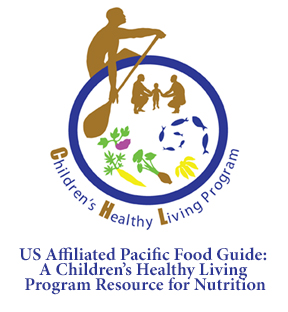



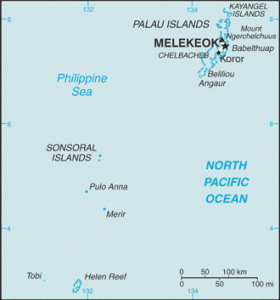
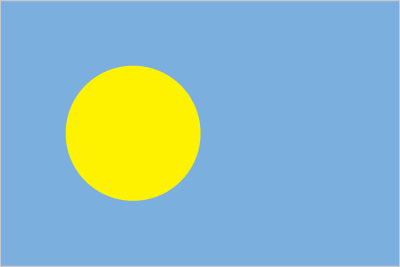 Economy: Since World War II, most people on Palau have worked for the government. Some people engage in near-shore fishing and subsistence farming of taro, sweet potato, and cassava. Palau has no major export crops (Central Intelligence Agency, 2014f). The Palauan government generates some revenue through licensing foreign commercial tuna fishing vessels. In addition to tuna, Palau exports a small amount of clothing (Encyclopaedia Britannica, 2014i). Expansion of air travel in the Pacific and Palau’s proximity to Guam, a major destination for East Asian tourists, has caused rapid growth in its tourism industry. Revenues from tourism together with significant U.S. Government aid received under the COFA are two reasons why the population has a per capita income roughly double that of the Philippines and much of Micronesia. Major imports include machinery and equipment, fuels, metals, and foodstuffs (Central Intelligence Agency, 2014f).
Economy: Since World War II, most people on Palau have worked for the government. Some people engage in near-shore fishing and subsistence farming of taro, sweet potato, and cassava. Palau has no major export crops (Central Intelligence Agency, 2014f). The Palauan government generates some revenue through licensing foreign commercial tuna fishing vessels. In addition to tuna, Palau exports a small amount of clothing (Encyclopaedia Britannica, 2014i). Expansion of air travel in the Pacific and Palau’s proximity to Guam, a major destination for East Asian tourists, has caused rapid growth in its tourism industry. Revenues from tourism together with significant U.S. Government aid received under the COFA are two reasons why the population has a per capita income roughly double that of the Philippines and much of Micronesia. Major imports include machinery and equipment, fuels, metals, and foodstuffs (Central Intelligence Agency, 2014f).
 State of Yap: The volcanic islands of Gagil-Tamil, Maap, Rumung, and Yap, are located within a coral reef and collectively comprise the Yap islands (Encyclopaedia Britannica, 2014l). Located 280 miles east of Palau and 500 miles southwest of Guam, The Yap islands, together with one other volcanically raised island and eight major atolls, comprise the state of Yap. The state covers 78,000 square miles of ocean in the Western Pacific and has a total land area of 46 square miles (Yap State Government, 2011). The earliest inhabitants of Yap most likely came from Eastern Indonesia or the Philippines around 1500 B.CE or earlier (Yap Visitors Bureau, 2014). Yap is famous for its stone money, which was quarried in Palau and brought to the state in oceangoing canoes. The stones are large and round with a hole in the middle, made to be placed on poles. There are about 12,000 pieces remaining in Yap, and it is illegal to remove them (Ridgell, 1995). In 1525 Dioga Da Rocha from Portugal was the first European to visit Yap; various other European navigators would pass through the islands of Yap over the next 2 centuries. In 1731 the first Catholic missionaries came to Yap from Guam (Yap Visitors Bureau, 2014). Over the next century or so Yap was nominally controlled by Spain. From 1800-1860 the Yapese traded sea cucumbers with British traders and other Europeans. In 1869 the Germans established their first permanent trading station in Yap (Yap Visitors Bureau, 2014). In the late 19th century an Irish-American named David O’Keefe made a small fortune by quarrying stone money in Palau and bringing it to Yap in a Chinese sailboat (Ridgell, 1995). The people of the Yap islands have a culture and language (Yapese) which are more closely related to the Melanesian language and culture than other Micronesian peoples (Encyclopaedia Britannica, 2014l). People on the outer islands of Yap state speak Nuclear Micronesian languages similar to outer-island Chuuk and Saipan Carolinian (Ridgell, 1995). Approximately one-tenth of the FSM population (about 11,200) people lives in Yap State (FSM Government, 2014b); ethnically Yapese comprise 5.7% and Yap outer islanders 5.1% of the total FSM population (Central Intelligence Agency, 2014d).
State of Yap: The volcanic islands of Gagil-Tamil, Maap, Rumung, and Yap, are located within a coral reef and collectively comprise the Yap islands (Encyclopaedia Britannica, 2014l). Located 280 miles east of Palau and 500 miles southwest of Guam, The Yap islands, together with one other volcanically raised island and eight major atolls, comprise the state of Yap. The state covers 78,000 square miles of ocean in the Western Pacific and has a total land area of 46 square miles (Yap State Government, 2011). The earliest inhabitants of Yap most likely came from Eastern Indonesia or the Philippines around 1500 B.CE or earlier (Yap Visitors Bureau, 2014). Yap is famous for its stone money, which was quarried in Palau and brought to the state in oceangoing canoes. The stones are large and round with a hole in the middle, made to be placed on poles. There are about 12,000 pieces remaining in Yap, and it is illegal to remove them (Ridgell, 1995). In 1525 Dioga Da Rocha from Portugal was the first European to visit Yap; various other European navigators would pass through the islands of Yap over the next 2 centuries. In 1731 the first Catholic missionaries came to Yap from Guam (Yap Visitors Bureau, 2014). Over the next century or so Yap was nominally controlled by Spain. From 1800-1860 the Yapese traded sea cucumbers with British traders and other Europeans. In 1869 the Germans established their first permanent trading station in Yap (Yap Visitors Bureau, 2014). In the late 19th century an Irish-American named David O’Keefe made a small fortune by quarrying stone money in Palau and bringing it to Yap in a Chinese sailboat (Ridgell, 1995). The people of the Yap islands have a culture and language (Yapese) which are more closely related to the Melanesian language and culture than other Micronesian peoples (Encyclopaedia Britannica, 2014l). People on the outer islands of Yap state speak Nuclear Micronesian languages similar to outer-island Chuuk and Saipan Carolinian (Ridgell, 1995). Approximately one-tenth of the FSM population (about 11,200) people lives in Yap State (FSM Government, 2014b); ethnically Yapese comprise 5.7% and Yap outer islanders 5.1% of the total FSM population (Central Intelligence Agency, 2014d).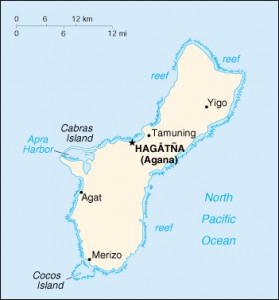 History: The indigenous people of the Mariana Islands, called Chamorros, arrived on Guam 3,000 to 4,000 years ago. Archaeological evidence shows that by 800 C.E. they had developed a complex society (Encyclopaedia Britannica, 2014c) which carved large stone pillars arranged in parallel rows as structural supports for buildings. Called latte stones, these pillars are prevalent in Guam and the Northern Mariana Islands. Found only in the Marianas, latte can reach up to 16 feet in height (Ridgell, 1995). The first contact between Europeans and any Pacific Island civilization came in 1521, when Ferdinand Magellan visited Guam (Ridgell, 1995). In 1565 Spain declared the Marianas Islands a colony, and Guam became a stop for Spanish galleons traveling between Mexico and the Philippines (Encyclopaedia Britannica, 2014h). In 1668 a Jesuit priest named San Vitores established a Catholic mission on Guam and began converting the Chamorros to Catholicism. Conflicts erupted between native Chamorros and the Spanish settlers, leading to the Spanish Chamorro Wars of 1680 to 1696 (Encyclopaedia Britannica, 2014h). The Spanish fought with the Chamorros, killing many and forcing other Chamorros from the Northern Mariana Islands to relocate to Guam (Ridgell, 1995). During this period the indigenous Chamorro population was also severely depleted as a result of diseases introduced by the Spanish (Encyclopaedia Britannica, 2014h). After the Spanish-American war in 1898 Spain ceded Guam to the United States. Until 1950 Guam’s governor was a naval officer appointed by the president of the United States. During World War II the Japanese Imperial Army occupied Guam from just after the attack on Pearl Harbor in December 1941 until it was recaptured by U.S. forces in August of 1944 (Encyclopaedia Britannica, 2014c). In 1950 Guam became a U.S. territory and its people became U.S. citizens (Ridgell, 1995). Beginning in the 1970s Guam adopted a more representative form of self-government, electing its first governor in 1970, sending a non-voting representative delegate to congress in 1972, and writing a territorial constitution in 1978. In 1982 a referendum vote resulted in the majority of Guamanians electing to adopt commonwealth status, but the provisions of this agreement were rejected by the U.S. government (Encyclopaedia Britannica, 2014c).
History: The indigenous people of the Mariana Islands, called Chamorros, arrived on Guam 3,000 to 4,000 years ago. Archaeological evidence shows that by 800 C.E. they had developed a complex society (Encyclopaedia Britannica, 2014c) which carved large stone pillars arranged in parallel rows as structural supports for buildings. Called latte stones, these pillars are prevalent in Guam and the Northern Mariana Islands. Found only in the Marianas, latte can reach up to 16 feet in height (Ridgell, 1995). The first contact between Europeans and any Pacific Island civilization came in 1521, when Ferdinand Magellan visited Guam (Ridgell, 1995). In 1565 Spain declared the Marianas Islands a colony, and Guam became a stop for Spanish galleons traveling between Mexico and the Philippines (Encyclopaedia Britannica, 2014h). In 1668 a Jesuit priest named San Vitores established a Catholic mission on Guam and began converting the Chamorros to Catholicism. Conflicts erupted between native Chamorros and the Spanish settlers, leading to the Spanish Chamorro Wars of 1680 to 1696 (Encyclopaedia Britannica, 2014h). The Spanish fought with the Chamorros, killing many and forcing other Chamorros from the Northern Mariana Islands to relocate to Guam (Ridgell, 1995). During this period the indigenous Chamorro population was also severely depleted as a result of diseases introduced by the Spanish (Encyclopaedia Britannica, 2014h). After the Spanish-American war in 1898 Spain ceded Guam to the United States. Until 1950 Guam’s governor was a naval officer appointed by the president of the United States. During World War II the Japanese Imperial Army occupied Guam from just after the attack on Pearl Harbor in December 1941 until it was recaptured by U.S. forces in August of 1944 (Encyclopaedia Britannica, 2014c). In 1950 Guam became a U.S. territory and its people became U.S. citizens (Ridgell, 1995). Beginning in the 1970s Guam adopted a more representative form of self-government, electing its first governor in 1970, sending a non-voting representative delegate to congress in 1972, and writing a territorial constitution in 1978. In 1982 a referendum vote resulted in the majority of Guamanians electing to adopt commonwealth status, but the provisions of this agreement were rejected by the U.S. government (Encyclopaedia Britannica, 2014c).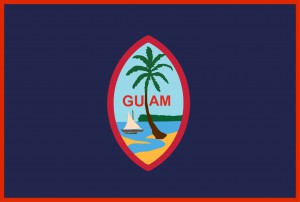 Demographics: Estimates of the Guamanian population prior to Spanish arrival are as high as 40,000. As a result of war with the Spanish and introduced diseases, the population dropped to around 5,000. Intermarriage between this Chamorro remnant, Filipinos brought to the island by the Spanish, and Spanish and Mexican soldiers gave rise to the Chamorro population seen today (Ridgell, 1995). Chamorros and other Micronesians make up approximately half the population, and Asians (especially Filipinos and Koreans) make up about a third. Foreign-born people account for 31% of Guam’s population. Of these, 13% are naturalized U.S. citizens and 18% are foreign nationals (U.S. Census Bureau, 2012). English and Chamorro are the official languages. English is the primary language for business and education, yet Chamorro is still spoken in many homes (Encyclopaedia Britannica, 2014c).
Demographics: Estimates of the Guamanian population prior to Spanish arrival are as high as 40,000. As a result of war with the Spanish and introduced diseases, the population dropped to around 5,000. Intermarriage between this Chamorro remnant, Filipinos brought to the island by the Spanish, and Spanish and Mexican soldiers gave rise to the Chamorro population seen today (Ridgell, 1995). Chamorros and other Micronesians make up approximately half the population, and Asians (especially Filipinos and Koreans) make up about a third. Foreign-born people account for 31% of Guam’s population. Of these, 13% are naturalized U.S. citizens and 18% are foreign nationals (U.S. Census Bureau, 2012). English and Chamorro are the official languages. English is the primary language for business and education, yet Chamorro is still spoken in many homes (Encyclopaedia Britannica, 2014c).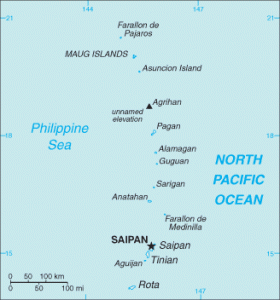
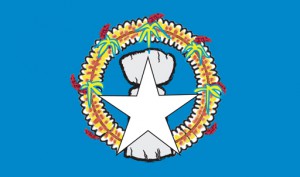 Economy: Approximately one quarter of the country’s GDP and one quarter of its workforce are employed in the tourism industry (Central Intelligence Agency, 2014e). Most tourists come from Japan, Korea, or America and go to Saipan or Rota (Encyclopaedia Britannica, 2014h). The garment industry is also a major source of exports. Until recently the country was exempt from many of the wage and labor regulations of the U.S. while still not being subject to duties and quotas imposed on foreign producers. This led to allegations of poor working conditions and labor practices, leading the U.S. government to enact minimum-wage and other legislation in 2007. As a result of this legislation (and infrastructure destruction from 2010 typhoons), production of garments and textiles has declined in recent years. Another major source of revenue is financial aid from the U.S. government. Small-scale agriculture operations produce coconuts, breadfruit, tomatoes, and melons; there are also several cattle ranches. The country relies on imports for food, construction equipment and materials, and petroleum products (Central Intelligence Agency, 2014e).
Economy: Approximately one quarter of the country’s GDP and one quarter of its workforce are employed in the tourism industry (Central Intelligence Agency, 2014e). Most tourists come from Japan, Korea, or America and go to Saipan or Rota (Encyclopaedia Britannica, 2014h). The garment industry is also a major source of exports. Until recently the country was exempt from many of the wage and labor regulations of the U.S. while still not being subject to duties and quotas imposed on foreign producers. This led to allegations of poor working conditions and labor practices, leading the U.S. government to enact minimum-wage and other legislation in 2007. As a result of this legislation (and infrastructure destruction from 2010 typhoons), production of garments and textiles has declined in recent years. Another major source of revenue is financial aid from the U.S. government. Small-scale agriculture operations produce coconuts, breadfruit, tomatoes, and melons; there are also several cattle ranches. The country relies on imports for food, construction equipment and materials, and petroleum products (Central Intelligence Agency, 2014e).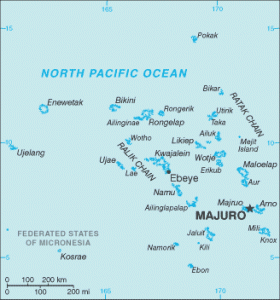
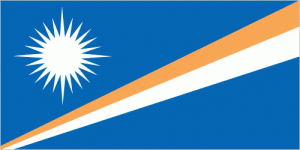 Economy: People living on atolls far from the two major population centers engage in subsistence fishing and farming. Major food crops include coconut, pandanus, breadfruit, and taro; people on the outer islands also raise pigs and poultry for food (Encyclopaedia Britannica, 2014f). Copra is the major export of the Marshall Islands; however the main source of economic revenue is the employment and rent generated by the U.S. base at Kwajalein. Some revenue also comes from commercial fishing in the large expanse of water comprising the Marshalls’ economic zone (Ridgell, 1995). The country relies on imports of machinery and transport equipment, fuel, and manufactured goods from the U.S., Japan, and Australia (Encyclopaedia Britannica, 2014f).
Economy: People living on atolls far from the two major population centers engage in subsistence fishing and farming. Major food crops include coconut, pandanus, breadfruit, and taro; people on the outer islands also raise pigs and poultry for food (Encyclopaedia Britannica, 2014f). Copra is the major export of the Marshall Islands; however the main source of economic revenue is the employment and rent generated by the U.S. base at Kwajalein. Some revenue also comes from commercial fishing in the large expanse of water comprising the Marshalls’ economic zone (Ridgell, 1995). The country relies on imports of machinery and transport equipment, fuel, and manufactured goods from the U.S., Japan, and Australia (Encyclopaedia Britannica, 2014f).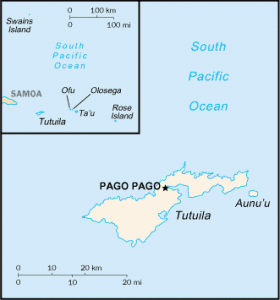
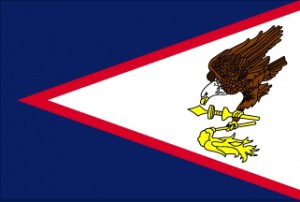 Economy: The Samoan economy is strongly linked with the U.S. (Central Intelligence Agency, 2014a). Government jobs are the main source of employment (Encyclopaedia Britannica, 2014a). Canned tuna is American Samoa’s main export, and there are a number of fishing, processing, and cannery operations in American Samoa. Just two canneries account for 80% of the territory’s non-government employment. Tourism is developing but limited at present. The rest of the economy is organized in traditional Polynesian fashion, with more than 90% of the land communally owned (Central Intelligence Agency, 2014a), and family gardens producing coconuts, breadfruit, and yams. Taro, bananas, tropical fruits, and some vegetables are produced on a semi-commercial basis (Encyclopaedia Britannica, 2014a).
Economy: The Samoan economy is strongly linked with the U.S. (Central Intelligence Agency, 2014a). Government jobs are the main source of employment (Encyclopaedia Britannica, 2014a). Canned tuna is American Samoa’s main export, and there are a number of fishing, processing, and cannery operations in American Samoa. Just two canneries account for 80% of the territory’s non-government employment. Tourism is developing but limited at present. The rest of the economy is organized in traditional Polynesian fashion, with more than 90% of the land communally owned (Central Intelligence Agency, 2014a), and family gardens producing coconuts, breadfruit, and yams. Taro, bananas, tropical fruits, and some vegetables are produced on a semi-commercial basis (Encyclopaedia Britannica, 2014a).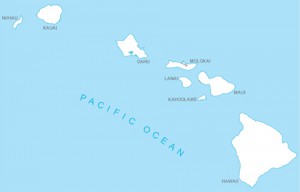 . or earlier, Polynesian voyagers from the Cook Islands, Tahiti-nui, and/or the Marquesas Islands settled in Hawai‘i, becoming its first inhabitants (Wilmshurst, Hunt, Lipo, & Anderson, 2011). By 900 C.E. trade and contact with Tahitian and other Polynesian peoples had been established. The early Hawaiian society was hierarchical, ruled by chiefs and priests who warred with each other for control of territory (Encyclopaedia Britannica, 2014d). In 1778 British Captain James Cook was the first European to visit the Hawaiian islands. Kamehameha Pai‘ea was the first Monarch of the Hawaiian islands, successfully unifying them into a kingdom in 1795. In the early 1800s American whaling fleets stopped at the islands (Encyclopaedia Britannica, 2014d). In 1820 the first missionaries arrived from Boston. The missionaries brought literacy to the Hawaiian islands, converted many people to Christianity, and acted to suppress native cultural practices such as hula (Menton & Tamura, 1999). Beginning with the missionaries, a minority of whites exerted increasing influence over the political and economic affairs of the nation, playing a role in the creation of a constitution in 1840 and the 1848 Great Mahele, or land division, which created a western-style private property system. This minority was also instrumental in the signing of a Reciprocity (or free-trade) Treaty with the United States in 1875, which benefited wealthy plantation owners (Encyclopaedia Britannica, 2014d). In 1893 the last of seven Hawaiian monarchs, Queen Lili‘oukalani, was overthrown by a small group of white Hawaiian Kingdom subjects with the help of marines landed from the USS Boston at the behest of U.S. Ambassador John L. Stevens (Menton & Tamura, 1999). After several failed attempts, Hawaiʻi was ostensibly annexed as a territory of the United States by a joint resolution of the U.S. Congress in 1898; no treaty of annexation was ever signed (Chock, 1995). The Hawaiian Homes Commission Act of 1920 created a government-sponsored homesteading program which offered land to native Hawaiians, defined as individuals with at least 50% native Hawaiian blood (Department of Hawaiian Home Lands, 2014). Hawaiʻi became the 50th U.S. state on August 21, 1959. Some scholars have argued that the 1959 statehood ballot used in the plebiscite was flawed, as it offered only two options (statehood or territorial status) and not “independence” or other “separate systems of self-government” as mandated by the United Nations (Trask, 2008). Beginning in the 1970s there was a resurgence of native Hawaiian language and customs, which continues to the present day (Encyclopaedia Britannica, 2014d).
. or earlier, Polynesian voyagers from the Cook Islands, Tahiti-nui, and/or the Marquesas Islands settled in Hawai‘i, becoming its first inhabitants (Wilmshurst, Hunt, Lipo, & Anderson, 2011). By 900 C.E. trade and contact with Tahitian and other Polynesian peoples had been established. The early Hawaiian society was hierarchical, ruled by chiefs and priests who warred with each other for control of territory (Encyclopaedia Britannica, 2014d). In 1778 British Captain James Cook was the first European to visit the Hawaiian islands. Kamehameha Pai‘ea was the first Monarch of the Hawaiian islands, successfully unifying them into a kingdom in 1795. In the early 1800s American whaling fleets stopped at the islands (Encyclopaedia Britannica, 2014d). In 1820 the first missionaries arrived from Boston. The missionaries brought literacy to the Hawaiian islands, converted many people to Christianity, and acted to suppress native cultural practices such as hula (Menton & Tamura, 1999). Beginning with the missionaries, a minority of whites exerted increasing influence over the political and economic affairs of the nation, playing a role in the creation of a constitution in 1840 and the 1848 Great Mahele, or land division, which created a western-style private property system. This minority was also instrumental in the signing of a Reciprocity (or free-trade) Treaty with the United States in 1875, which benefited wealthy plantation owners (Encyclopaedia Britannica, 2014d). In 1893 the last of seven Hawaiian monarchs, Queen Lili‘oukalani, was overthrown by a small group of white Hawaiian Kingdom subjects with the help of marines landed from the USS Boston at the behest of U.S. Ambassador John L. Stevens (Menton & Tamura, 1999). After several failed attempts, Hawaiʻi was ostensibly annexed as a territory of the United States by a joint resolution of the U.S. Congress in 1898; no treaty of annexation was ever signed (Chock, 1995). The Hawaiian Homes Commission Act of 1920 created a government-sponsored homesteading program which offered land to native Hawaiians, defined as individuals with at least 50% native Hawaiian blood (Department of Hawaiian Home Lands, 2014). Hawaiʻi became the 50th U.S. state on August 21, 1959. Some scholars have argued that the 1959 statehood ballot used in the plebiscite was flawed, as it offered only two options (statehood or territorial status) and not “independence” or other “separate systems of self-government” as mandated by the United Nations (Trask, 2008). Beginning in the 1970s there was a resurgence of native Hawaiian language and customs, which continues to the present day (Encyclopaedia Britannica, 2014d).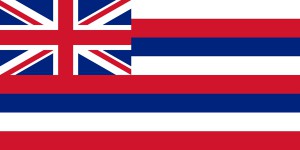 Economy: The largest industry in Hawaiʻi is tourism, which has grown steadily since World War II. Half of the hotels in the state are located in the vicinity of Waikiki, and cruise ships make regular stops at ports in the islands. Manufacturing on the islands ranges from small scale to heavy manufacturing including oil refineries, a concrete-pipe plant, and an aluminum-extrusion plant. Roughly one quarter of all workers in the state belong to a labor union (Encyclopaedia Britannica, 2014d). Although the majority of food consumed in the state is imported, there is a significant local agriculture sector producing Asian and local specialty foods, tropical fruits, coffee, macadamia nuts, and miscellaneous other crops for local consumption. Major exports include sugar, garments, flowers, and canned fish. Food, clothing, fuel, vehicles, and building materials are major imports. Hawaiʻi relies on imported fuel oil for most of its energy needs, although wind farms on Maui and O‘ahu and a geothermal plant on Hawaiʻi are examples of how the state is trying to increase the proportion of energy generated from renewable sources. The state government’s revenue comes primarily from a general excise tax, individual income taxes, and federal grants (Encyclopaedia Britannica, 2014d).
Economy: The largest industry in Hawaiʻi is tourism, which has grown steadily since World War II. Half of the hotels in the state are located in the vicinity of Waikiki, and cruise ships make regular stops at ports in the islands. Manufacturing on the islands ranges from small scale to heavy manufacturing including oil refineries, a concrete-pipe plant, and an aluminum-extrusion plant. Roughly one quarter of all workers in the state belong to a labor union (Encyclopaedia Britannica, 2014d). Although the majority of food consumed in the state is imported, there is a significant local agriculture sector producing Asian and local specialty foods, tropical fruits, coffee, macadamia nuts, and miscellaneous other crops for local consumption. Major exports include sugar, garments, flowers, and canned fish. Food, clothing, fuel, vehicles, and building materials are major imports. Hawaiʻi relies on imported fuel oil for most of its energy needs, although wind farms on Maui and O‘ahu and a geothermal plant on Hawaiʻi are examples of how the state is trying to increase the proportion of energy generated from renewable sources. The state government’s revenue comes primarily from a general excise tax, individual income taxes, and federal grants (Encyclopaedia Britannica, 2014d).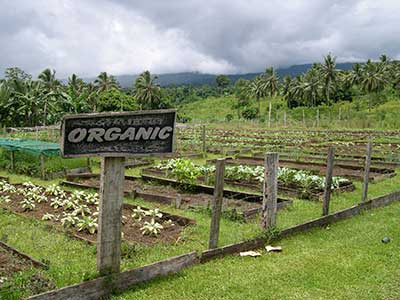
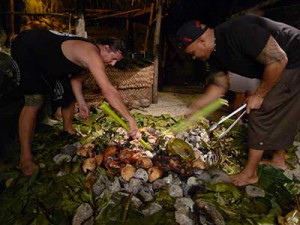 Food in Pacific Island societies was often shared among family, friends and members of the community. In the Federated States of Micronesia and in the Marshall Islands, food produced by the family was commonly shared among others, even if the amount of food produced was scarce. It was customary for the amount of food given away to be greater than that kept for oneself. The act of sharing was reciprocal, in that families took turns sharing their food with one another. After fishing expeditions, the catch was shared with relatives and friends. If for some reason, such as illness, a man could not go fishing, fish and other foods would be shared with him and his family (Rody, 1982).
Food in Pacific Island societies was often shared among family, friends and members of the community. In the Federated States of Micronesia and in the Marshall Islands, food produced by the family was commonly shared among others, even if the amount of food produced was scarce. It was customary for the amount of food given away to be greater than that kept for oneself. The act of sharing was reciprocal, in that families took turns sharing their food with one another. After fishing expeditions, the catch was shared with relatives and friends. If for some reason, such as illness, a man could not go fishing, fish and other foods would be shared with him and his family (Rody, 1982).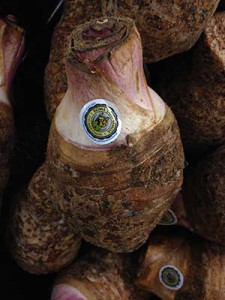 Colocasia: taro, true taro, Polynesian taro, Asia taro, red taro
Colocasia: taro, true taro, Polynesian taro, Asia taro, red taro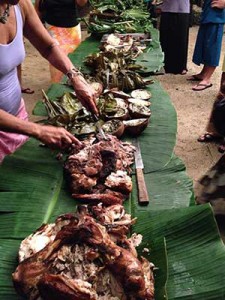 Throughout many Pacific Island societies, the production of food was ultimately a community event, where everyone had their rightful role. The Hawaiian’s division of labor in the kauhale (home, village) was very definitive. It was believed that men of the household needed to be protected from contamination of their food and work gear by women, who were periodically “unclean” due to their menstruation. Therefore, the production and preparation of food was dependent upon men. This principle led to restrictions on who could or could not do what, in connection with the simplest activities of daily living. Every aspect of taro economy and culture was man’s work. This included the making and tending of fields, terraces, ditches, planting, cultivating and harvesting taro, steaming taro in the earth oven, and peeling and pounding the steamed corms to make poi. Women were responsible for raising children, preparing pandanus leaves, plaiting mats and baskets, and performing all of the complex operations of tapa making. Women also gathered salt from evaporated salt water pools and stored it, and collected shellfish and edible seaweed (Handy, 1991).
Throughout many Pacific Island societies, the production of food was ultimately a community event, where everyone had their rightful role. The Hawaiian’s division of labor in the kauhale (home, village) was very definitive. It was believed that men of the household needed to be protected from contamination of their food and work gear by women, who were periodically “unclean” due to their menstruation. Therefore, the production and preparation of food was dependent upon men. This principle led to restrictions on who could or could not do what, in connection with the simplest activities of daily living. Every aspect of taro economy and culture was man’s work. This included the making and tending of fields, terraces, ditches, planting, cultivating and harvesting taro, steaming taro in the earth oven, and peeling and pounding the steamed corms to make poi. Women were responsible for raising children, preparing pandanus leaves, plaiting mats and baskets, and performing all of the complex operations of tapa making. Women also gathered salt from evaporated salt water pools and stored it, and collected shellfish and edible seaweed (Handy, 1991).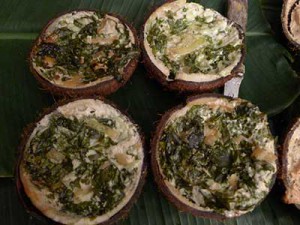 All of the starchy foods that were important to Pacific Island societies had to be cooked. This included taro, yams and breadfruit. This was necessary to rid them of toxic substances located under the skin. The accompanying dish could be either cooked or eaten raw. The predominant mode of cooking in the Pacific Islands was baking in an earth oven, as this was a major way of applying fire to food, and it could be used for most foods that needed to be cooked. Cooking in an earth oven either baked or steamed the food, depending on whether water was added. For example, Hawaiian’s preferred to steam their taro corms in the earth oven (imu). The Samoan earth oven (umu) was closely related to the Hawaiian earth oven. However, the Samoan earth oven was made above ground, rather than in a pit. The different modes of cooking altered the taste of foods, and Pacific Island societies varied in their preferences.
All of the starchy foods that were important to Pacific Island societies had to be cooked. This included taro, yams and breadfruit. This was necessary to rid them of toxic substances located under the skin. The accompanying dish could be either cooked or eaten raw. The predominant mode of cooking in the Pacific Islands was baking in an earth oven, as this was a major way of applying fire to food, and it could be used for most foods that needed to be cooked. Cooking in an earth oven either baked or steamed the food, depending on whether water was added. For example, Hawaiian’s preferred to steam their taro corms in the earth oven (imu). The Samoan earth oven (umu) was closely related to the Hawaiian earth oven. However, the Samoan earth oven was made above ground, rather than in a pit. The different modes of cooking altered the taste of foods, and Pacific Island societies varied in their preferences.